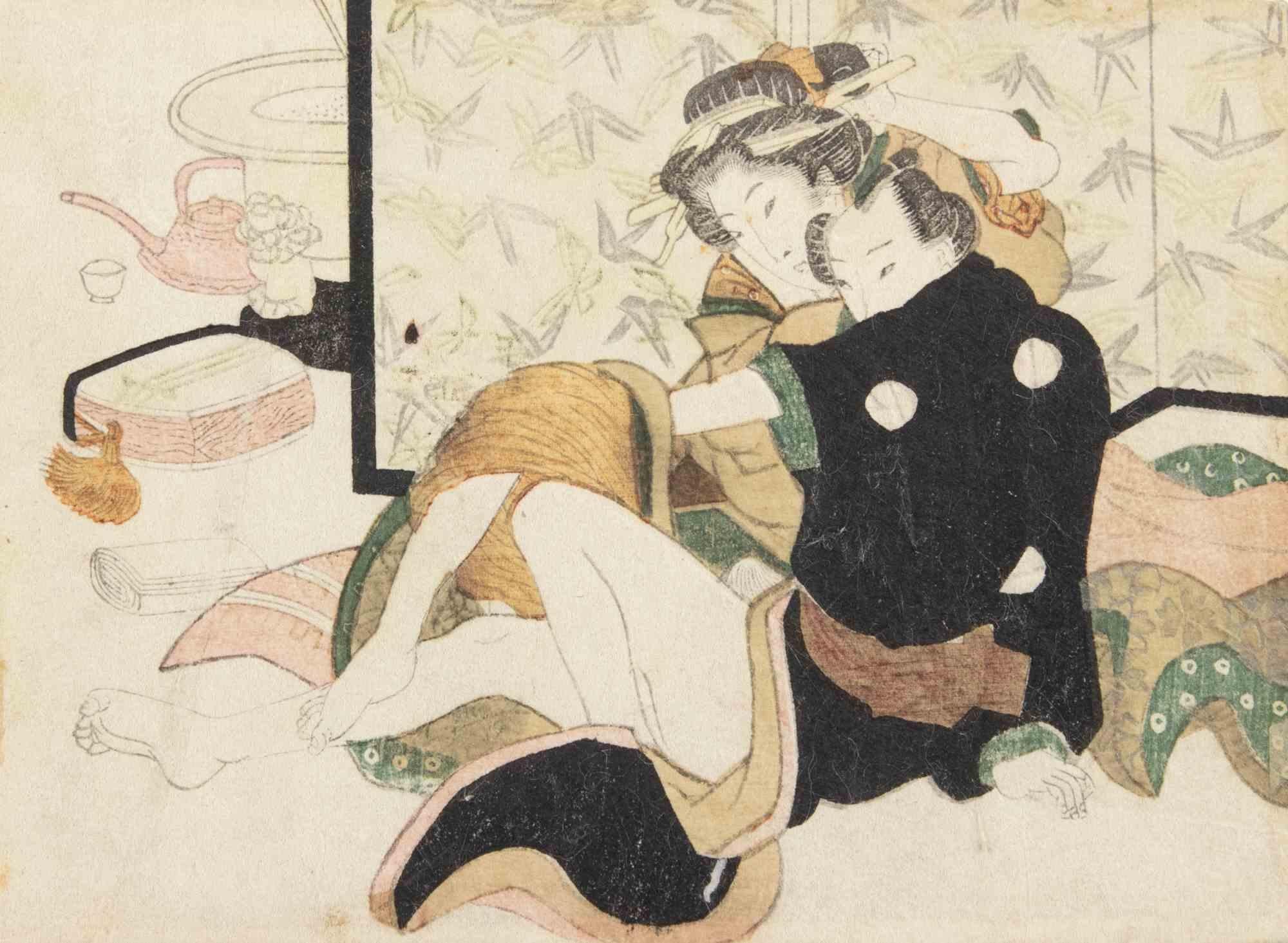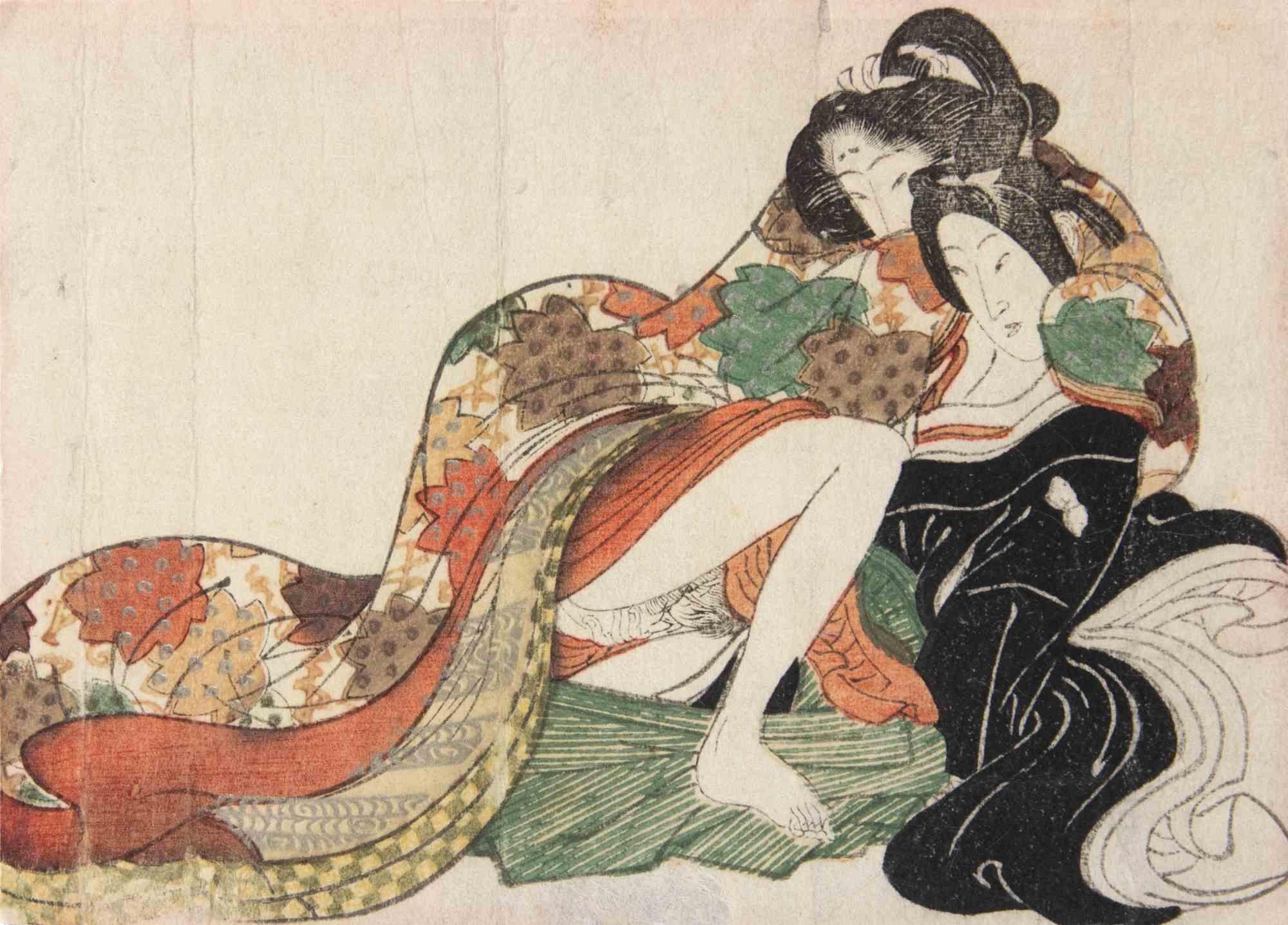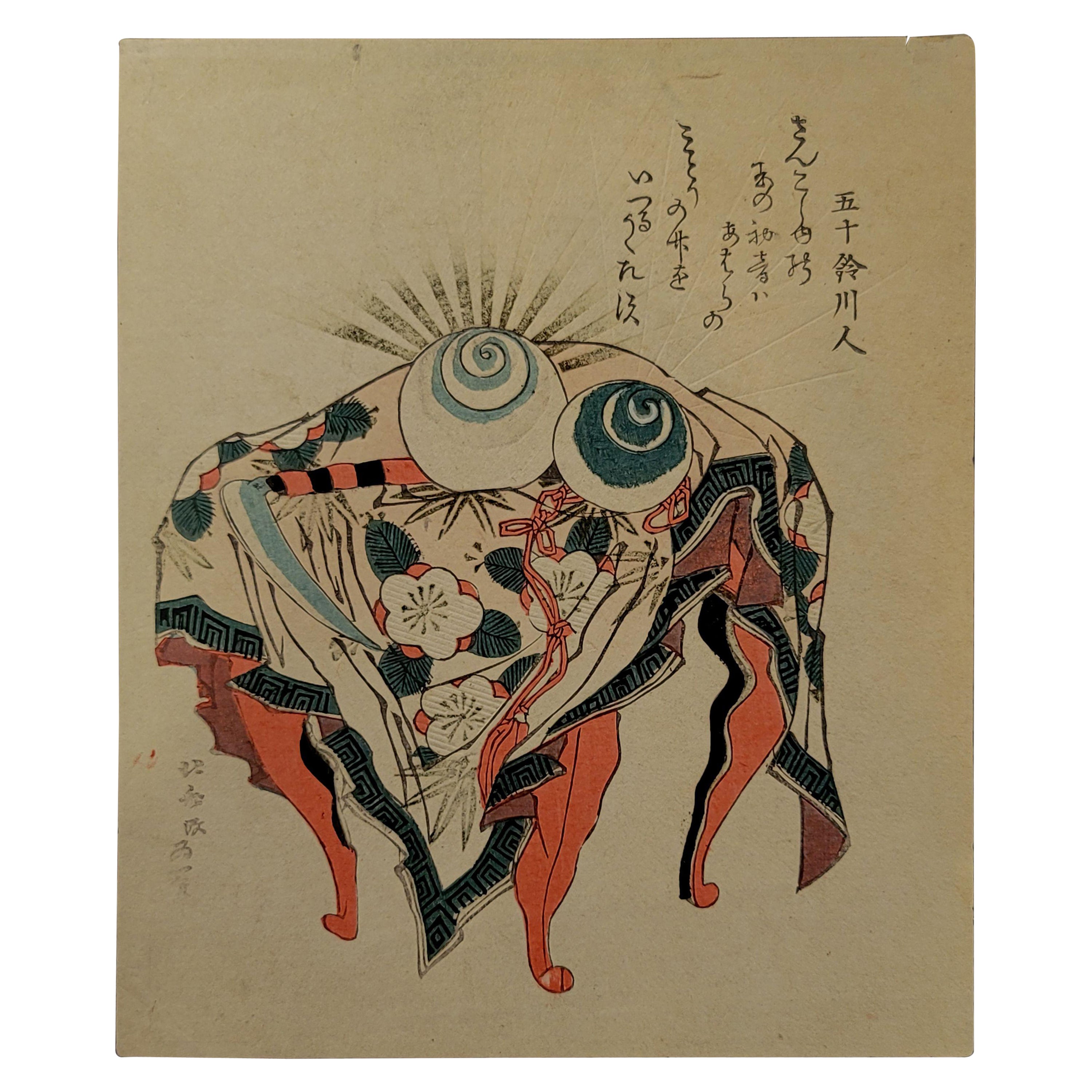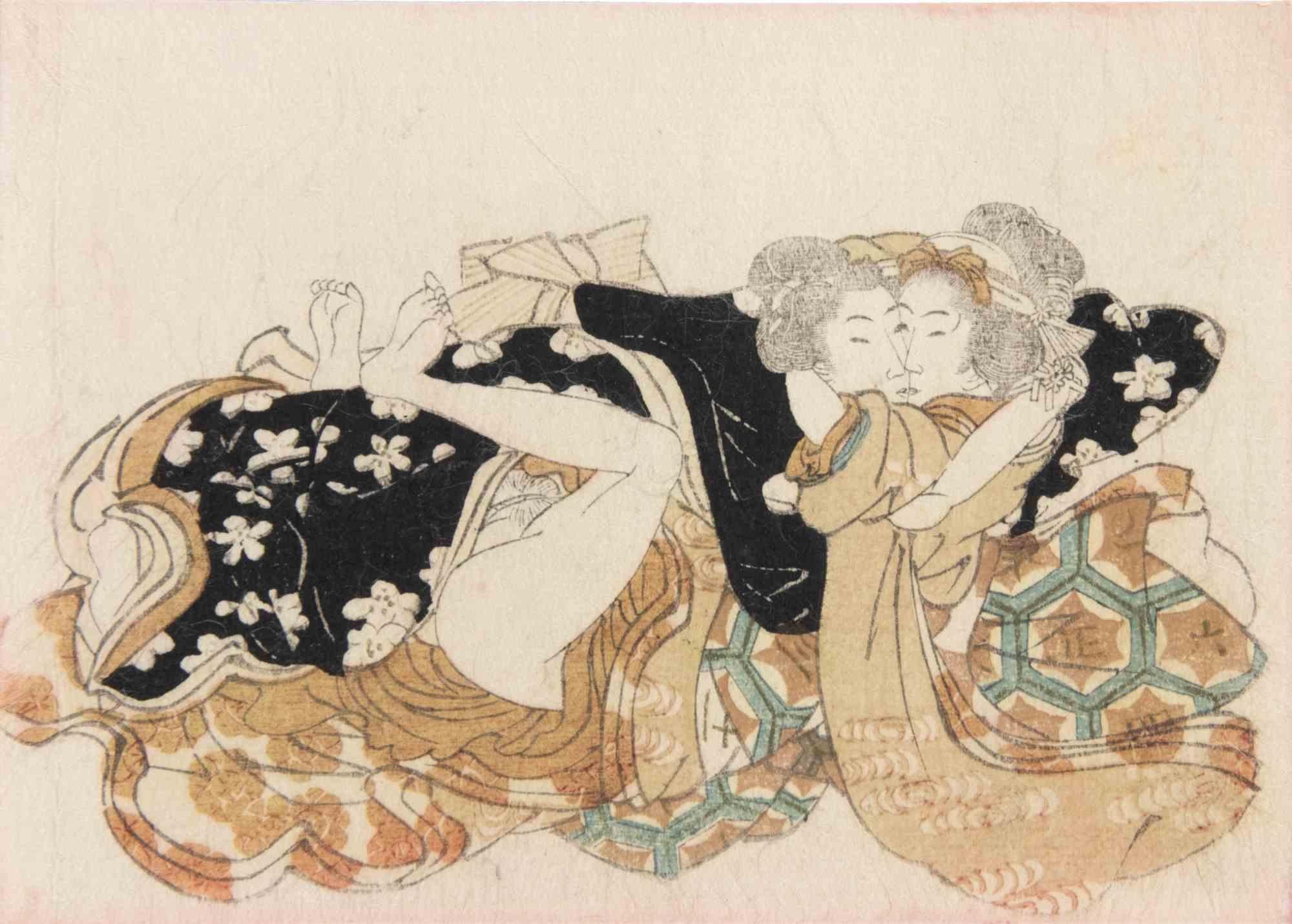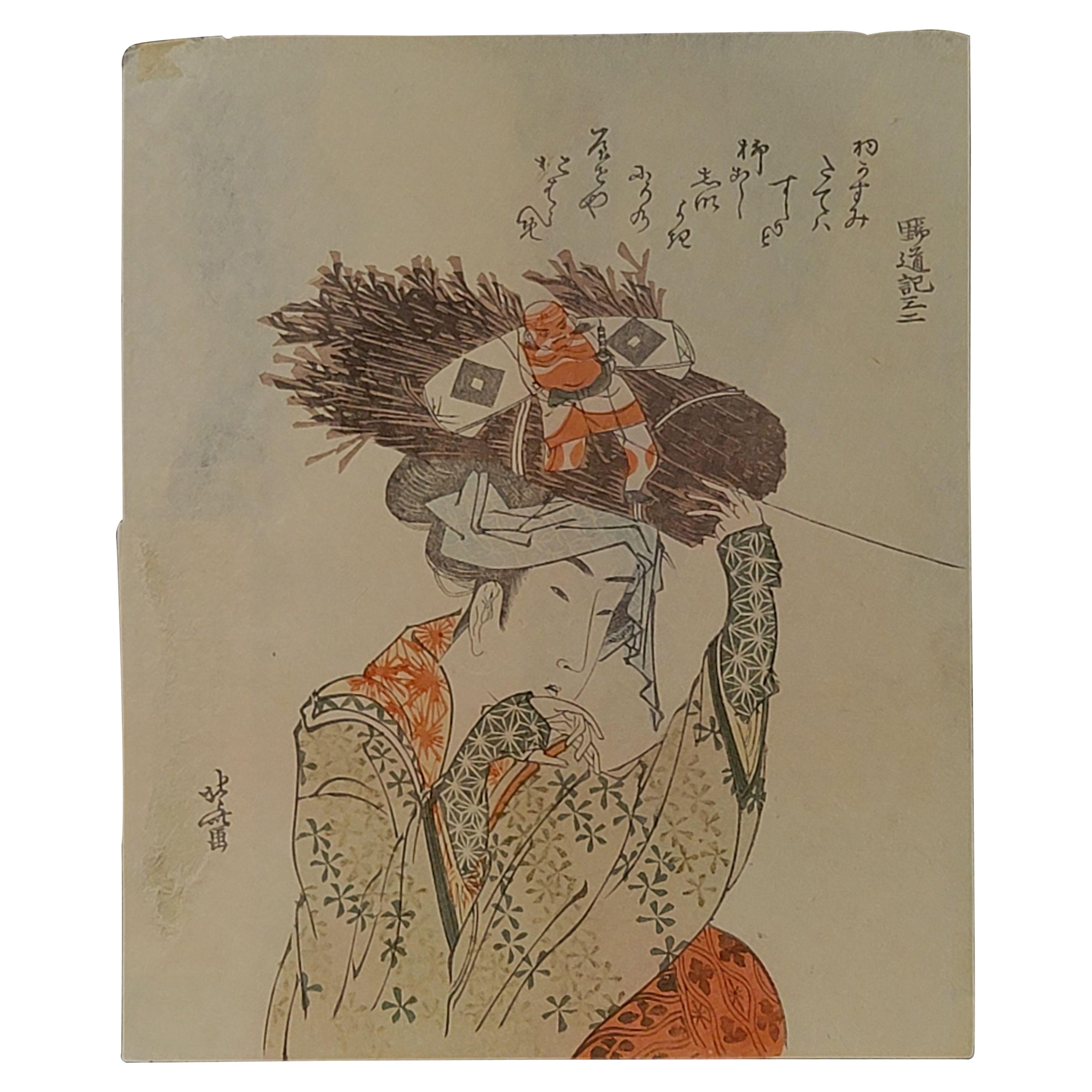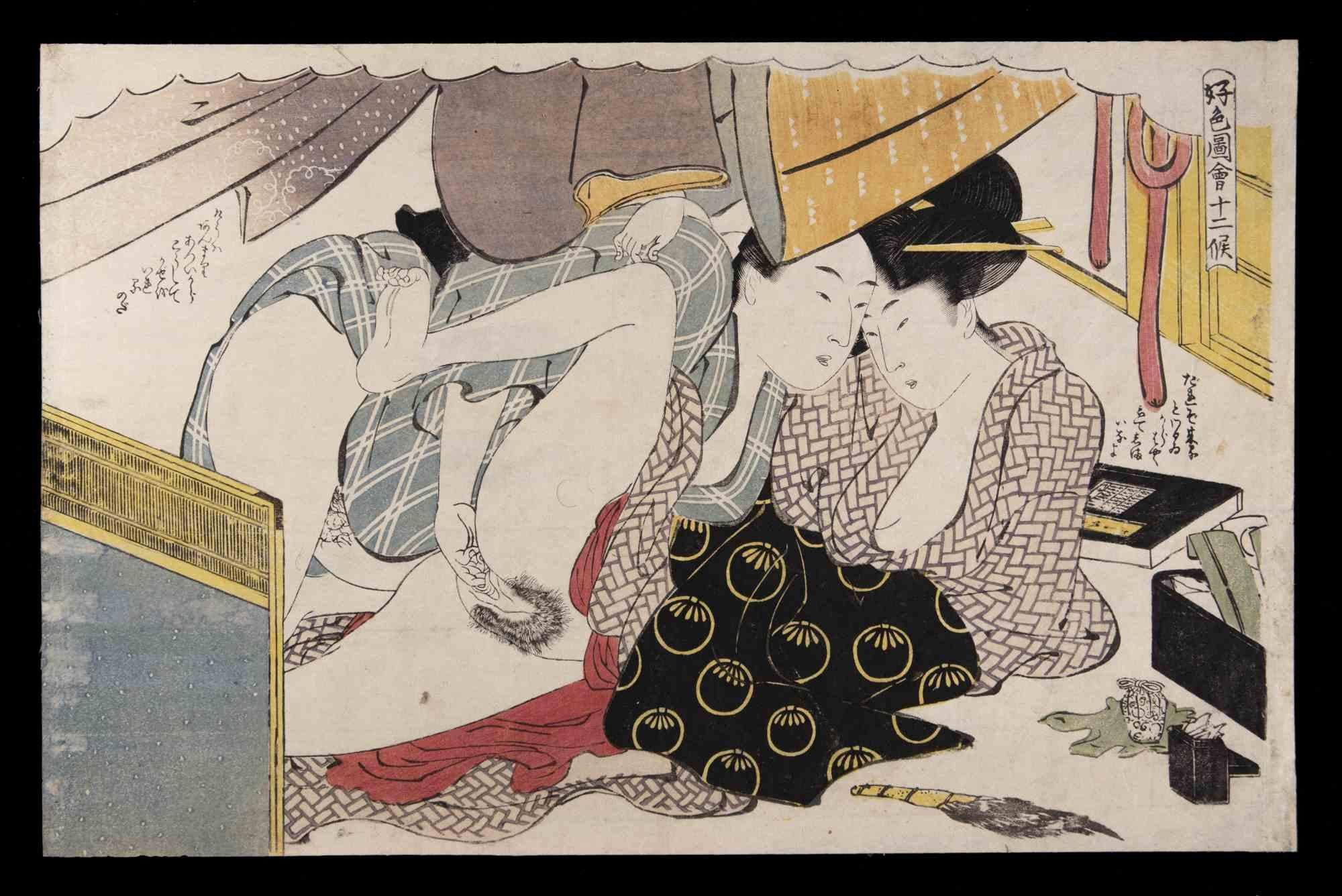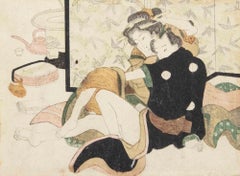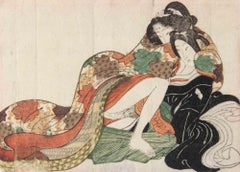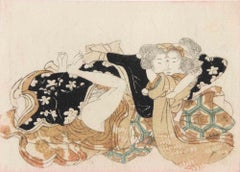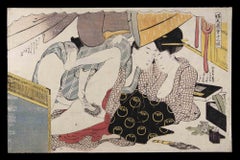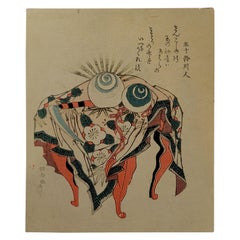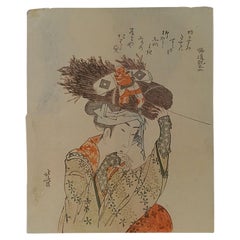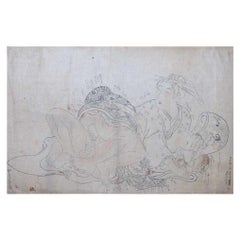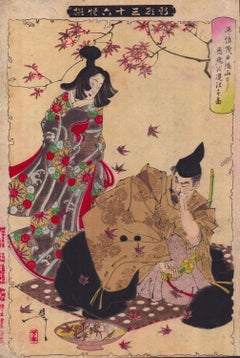Items Similar to Erotic Scene - Drawing attr. Kyosai Watanabe - Late 19th Century
Want more images or videos?
Request additional images or videos from the seller
1 of 2
Erotic Scene - Drawing attr. Kyosai Watanabe - Late 19th Century Late 19th Century
Late 19th Century
$775.39
£573.26
€650
CA$1,066.54
A$1,185.53
CHF 621.43
MX$14,478.14
NOK 7,758.16
SEK 7,298.98
DKK 4,948.44
About the Item
Ink and watercolor realized in the late 19th Century and attributed to Kyosai Watanabe.
Bold and unusual erotic scene drawn with the artist's characteristic comic flair.
Good condition.
- Attributed to:Kyosai Watanabe
- Creation Year:Late 19th Century
- Dimensions:Height: 9.06 in (23 cm)Width: 12.52 in (31.8 cm)Depth: 0.08 in (2 mm)
- Medium:
- Movement & Style:
- Period:
- Framing:Framing Options Available
- Condition:Insurance may be requested by customers as additional service, contact us for more information.
- Gallery Location:Roma, IT
- Reference Number:Seller: T-1529541stDibs: LU650315736222
About the Seller
4.9
Platinum Seller
Premium sellers with a 4.7+ rating and 24-hour response times
1stDibs seller since 2017
7,681 sales on 1stDibs
Typical response time: 3 hours
- ShippingRetrieving quote...Shipping from: Grasse, France
- Return Policy
Authenticity Guarantee
In the unlikely event there’s an issue with an item’s authenticity, contact us within 1 year for a full refund. DetailsMoney-Back Guarantee
If your item is not as described, is damaged in transit, or does not arrive, contact us within 7 days for a full refund. Details24-Hour Cancellation
You have a 24-hour grace period in which to reconsider your purchase, with no questions asked.Vetted Professional Sellers
Our world-class sellers must adhere to strict standards for service and quality, maintaining the integrity of our listings.Price-Match Guarantee
If you find that a seller listed the same item for a lower price elsewhere, we’ll match it.Trusted Global Delivery
Our best-in-class carrier network provides specialized shipping options worldwide, including custom delivery.More From This Seller
View AllShunga - Woodcut attr. Keisai Eisen - Mid-19th Century
By Keisai Eisen
Located in Roma, IT
Woodcut shunga print attributed to Keisai Eisen and realized in the early 19th century.
Good condition except for some signs of time.
Category
Mid-19th Century Modern Figurative Prints
Materials
Woodcut
Shunga - Woodcut attr. Keisai Eisen - Mid-19th Century
By Keisai Eisen
Located in Roma, IT
Woodcut shunga print attributed to Keisai Eisen and realized in the early 19th century.
Good condition except for some signs of time.
Category
Mid-19th Century Modern Figurative Prints
Materials
Woodcut
Shunga - Woodcut attr. Keisai Eisen - Mid-19th Century
By Keisai Eisen
Located in Roma, IT
Woodcut shunga print attributed to Keisai Eisen and realized in the early 19th century.
Good condition except for some signs of time.
Category
Mid-19th Century Modern Figurative Prints
Materials
Woodcut
Shunga - Woodcut by Katsukawa Schuncho - Mid-18th Century
By Katsukawa Shunshō
Located in Roma, IT
Shunga is an original modern artwork realized by Katsukawa Schuncho (1726 – 1793) in the half of the 18th Century.
Erotic scene from the series "Koshuko zue juni ko".
A courtesan with a customer under a kimono stand...
Category
Mid-18th Century Modern Portrait Prints
Materials
Paper, Woodcut
Romantic Drama - Woodcut Print by Utagawa Kunisada - 1850s
By Utagawa Kunisada (Toyokuni III)
Located in Roma, IT
Romantic Drama is an original modern artwork realized by Utagawa Kunisada in 1853.
Woodcut print oban diptych format from a tryptich. Signature: Toyokuni ga. Publisher: Tsujiokaya B...
Category
19th Century Modern Figurative Prints
Materials
Woodcut
Umegaye. Hayakawa Takakage in... - Woodcut by Utagawa Kuniyoshi - 19th century
By Utagawa Kuniyoshi
Located in Roma, IT
Woodcut print realized by Utagawa Kuniyoshi in 19th century.
Good condition.
Category
Mid-19th Century Modern Figurative Prints
Materials
Woodcut
You May Also Like
Japanese Woodblock Print by Hokusai Katsushika, 葛飾北齋 (1760~1849)
Located in Norton, MA
Original Japanese Woodblock print by Hokusai Katsushika, 葛飾北齋 '1760-1849'
About the artist
Japanese artist, Hokusai Katsushika, was born in Edo as...
Category
Antique Early 19th Century Japanese Prints
Materials
Paper
Japanese Woodblock print by Hokusai Katsushika, 葛飾北齋 '1760-1849'
Located in Norton, MA
Original Japanese Woodblock print by Hokusai Katsushika, 葛飾北齋 '1760-1849'
About the artist
Japanese artist, Hokusai Katsushika, was born in Edo as...
Category
Antique Early 19th Century Japanese Prints
Materials
Paper
Framed Japanese ink on paper artist's instruction for a Shunga print
Located in Point Richmond, CA
Japanese ink on paper wood block shunga artist’s color and pattern illustration with instructions for the woodblock carver and printer, depicting...
Category
Antique Late 19th Century Japanese Meiji Paintings and Screens
Materials
Paper
Yoshitoshi: Taira no Koremochi Vanquishing the Demon of Mount Togakushi
By Tsukioka Yoshitoshi
Located in BRUCE, ACT
Tsukioka Yoshitoshi
Taira no Koremochi Vanquishing the Demon of Mount Togakushi
From Series: “New Forms of Thirty-six Ghosts”
「新形三十六怪撰」 「平惟茂戸隠山に悪鬼を退治す図」
C. 1890
Size: Oban
Ex...
Category
1890s Figurative Prints
Materials
Woodcut
$1,302 Sale Price
30% Off
Japanese Woodblock Print by Utagawa Yoshitora 一猛齋芳虎 (1836~1880)
Located in Norton, MA
Utagawa Yoshitora, ????? ( ????) was a designer of ukiyo-e Japanese woodblock prints and an illustrator of books and newspapers who was active from a...
Category
Antique Mid-19th Century Japanese Prints
Materials
Paper
Japanese Artisans - Silk Dying -Japanese Woodblock Print
By Tosa Mitsuyoshi
Located in Soquel, CA
Japanese Artisans - Japanese Woodblock Print J
Japanese woodblock depicting six women, all wearing vibrant kimonos, working on crafts by Tosa Mitsuoki (Japanese, 1617-1691). Japanese,c. 1600. Handcraft depiction (dye works).Section from a painted screen with presentations of handcraft.Kita-in, Saitama.
Stamped lower left.
Presented in a white mat and giltwood frame.
Frame: 19"H x 14"W
Mat: 18.25"H x 13.25"W
Image: 14.5"H x 9.5"W
Tosa Mitsuoki was a Japanese painter, reinvigorating the Yamato style of classical Japanese painting. Yamato-e originated from interest in reproducing early Tang dynasty paintings, and was later reinvented and further refined to fit Japanese cultural perceptions in the late Heian period. Yamato, sometimes referred to as wa or kazu had become synonymous with the Tosa-ha by the Muromachi period as a way for Japanese artist to distinguish their works from those of mainland Chinese paintings, kara-e. Yamato-e incorporated various visual and literary techniques for establishing narrative. Works were not always accompanied with text and may rely on heavily on period specific visual motifs, icons, and symbols to relay a story or theme. Tosa style by the time of Mitsuoki focused heavily on depicting themes of plants and nature, famous places, meisho, the four seasons, shik, bird-and-flower, kacho. Many of these popular symbols and icons from mimicking Chinese practices, treating the original Chinese masterwork as a sort of prototype to improve upon. Popular formats for Mitsuoki's pictures were wall scrolls kakemono, or handscrolls that would be read from right to left with the accompanied story, sliding doors fusuma and folding screen panels byobu that featured up to six panels. Mitsuoki's style incorporated the depth and calligraphy techniques of ink wash brushwork similar to Song dynasty and Yuan dynasty Chinese court paintings...
Category
1920s Edo Landscape Paintings
Materials
Paper, Ink, Woodcut
More Ways To Browse
Erotic Art Painting
Erotic Drawings
Erotic Watercolor
Erotic Scene
Antique Erotic
Antique Erotic Drawings
19th Century Erotic Art
Vintage Watercolour Palette
Fascist Art
Ink Wash Painting
Watercolour 1912
Florida Watercolors
Charcoal Drawing Paris
Japanese Watercolor Signed
Japanese Watercolour Signed
French Architectural Watercolor
Dancers Drawings
Architectural Pencil Drawing
